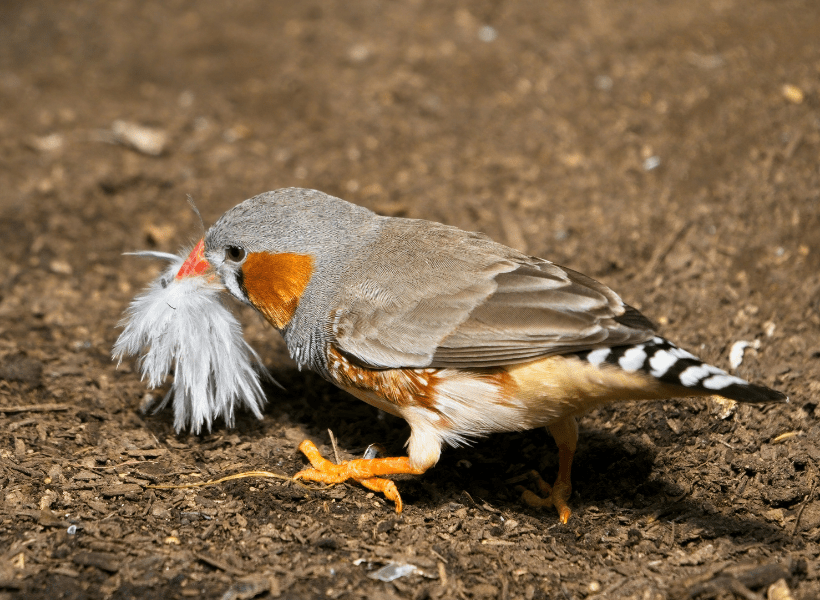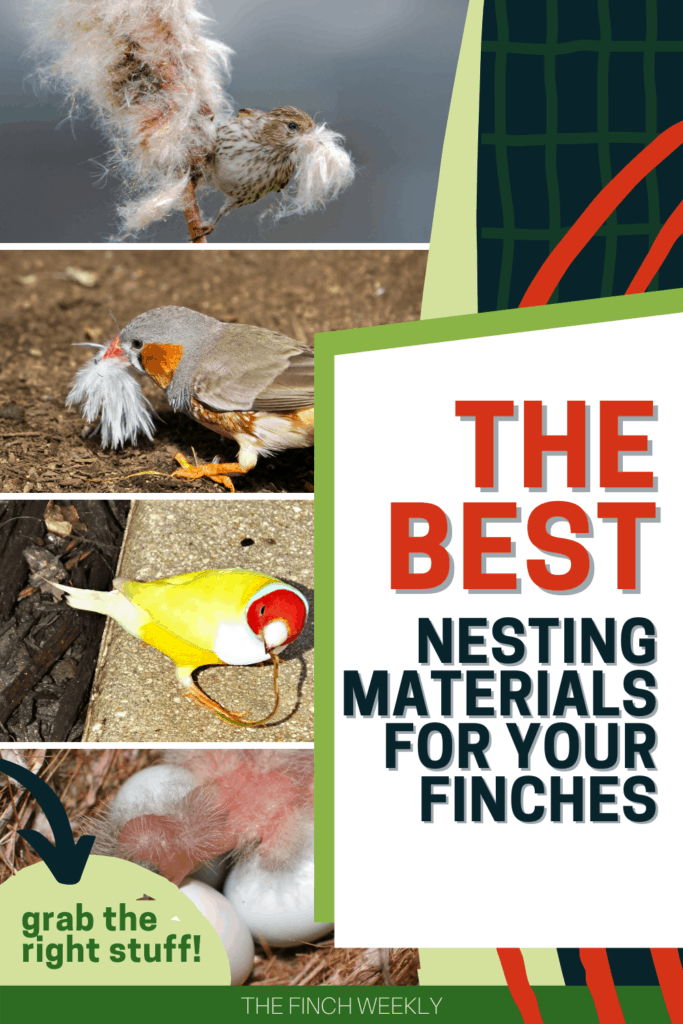For the majority of finch keepers, you eventually end up discussing nesting material. What the finches like, what they use and even what exactly it all is – and then there are what the bird actually take any notice of, which can vary from bird to bird!
So, I thought I would do a bit of a roundup of some of the main nesting materials available that may appeal to different finches as well as to some of their cousins.
The nest
Before we start talking about nesting materials, a word on the nest themselves. Just like the stuff that goes in them, birds of the same species can favour different nests. Some like to construct their own while others will steal a one made by someone else. The majority will take a ready-made nest and add their choice of material then do a little house keeping to get it all just right.
There are plenty of nesting boxes available ranging from canary nesting pans and dove platforms through to wicker baskets of various forms, wood and plastic nests. In the flight, I tend to put up lots of different nests to allow them to choose what they like as well as providing facilities for them to build their own. In cages, I tend to try plastic nests first then use wicker ones if they won’t accept them.
There are pros and cons to all the different nests. Wicker ones, for example, come in different sizes and shapes and are quite cost effective. After a couple of uses they might not come up clean but can be thrown out. Plastic ones cost more but wash up well and can soak in hot water to remove the muck.
Check this out
For more information about different types of nests, take a look at this post – How to Choose a Nest Box for Your Finches
Common nesting materials
In the wild, birds will use whatever is around as nesting materials including grasses, feathers from other birds and fur from mammals. In captivity, they often opt for either what attracts them or perhaps what they were raised with – there’s no way of knowing. I often take new nesting material and pop in in the flight to see who takes it then that decides if I buy it again.
Coconut fibre
One of the most popular types of nesting material I have noticed is coconut fibre. It is normally a brown colour but you can get white fibre. There have been some stories about the process used to bleach the colour from the material and the chance that it might be harmful to the birds. But most of the breeders I know have used it for years without any problems. Often waxbills prefer white nesting materials so it is a good option for them. Coconut fibre is popular as a structural material as it curls nicely.
Jute
Another material I find that my birds like is jute. This is used to make sacks and some types of coarse cloth but for nesting material, it comes in bags and is soft, a little like dense cotton wool. The birds seem to enjoy lining their nests with it once they have made the structure.
Sisal
Sisal comes from a species of Agave plant (same stuff used to make tequila!) and is a stiff fibre that is used for rope, twine as well as paper, cloth and even hats. It is often combined with other materials such as jute and coconut in mixed bags of nesting material that can be very useful to allow birds to select what they prefer.
Cotton
Sharpie cotton is small pieces of cotton that are sold in bags for nesting purposes. It is white and therefore can be favoured by birds like waxbills and again is often combined with others in mixed bags, such as yarn and jute.
Kapok
Kapok is the name for a tree that comes from south-east Asia and is also known as Java cotton. The material from the seed pods is a very soft, white material that is quite water resistant and again is a great lining material. Before synthetic materials, it was used in pillows, mattresses and even in life jackets. It is also popular with species that roost in the nest as a type of finch bedding because it is so soft.
Feathers
Untreated feathers from pillows and other sources will also be welcomed by some birds. I bought an inexpensive goose feather pillow a while ago, and periodically give them a handful of the feathers. There’s one hell of a mess for a while as the feathers float around then within a few days, they all vanish into nests. In terms of the best zebra finch nesting material, it may not be the most effective to build with but they really do love it!

Animal hair
Animal hair is sold as a nesting material along with other natural fibres and is a great way to give birds another option. I know others who groom dogs, cats and other pets (mine used to get the rabbit’s fur) that they can use to line their nests. As long as you know the source of the material, then it shouldn’t be a problem but make sure the pets haven’t been treated with any spot-on treatments around the area the fur comes from.
Conclusion
There are lots of different materials that you can give birds to see if they use it for nesting – be sure that it doesn’t have any weird chemicals on it or any bacteria but otherwise, you should be fine. Then just watch to see what they use and what they don’t to help guide your purchases in the future.





I found your articles on keeping strawberry finches interesting as I am a beginner to keeping finches and all information is put to good use. am currently housing my finches in an 18foot flight with heated shed for breeding purposes. I keep blue faced green parrots which are breeding and strawberry finches along with zebras and fire tails if you or a reader has any suggestions to improve my keeping finches I would be grateful for any support. .
many thanks
martin
It would be nice to have measurements for the nest as a guide line.
Good point Ken I will note that down for an update! Thanks!
1.5
3.5